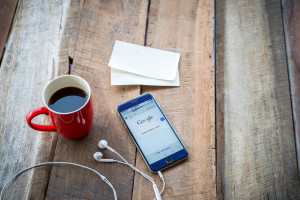
Creating a seamless customer experience.
In the old days, managing customer experience was easy. You just had to make sure that your employees were knowledgeable, had the right attitude, and used the right tone. If you had more than one location for your business, you would have to manage store layouts to ensure that customers entering any of your locations would have the same customer experience.
On the surface, it looks a lot like marketing strategies and customer experience strategies have changed a great deal over the past few years. However, if you look a little closer, you can see that marketing experts are just extending the same philosophy to all of business’ new communication and transaction channels.
For example, you know that you need to have online and mobile presences for your business to really grow in today’s global economy. You also know that you want to have the best, most consistent customer service and customer support possible, across all of your web and mobile presences. This is just an extension of the same strategy when you were managing your storefronts to give customers consistent experiences in your brick-and-mortar stores. Now you just have to do it with your mobile apps and ecommerce stores, too.
Think about the most successful companies you know that deliver an omni-channel customer experience. For example, whether you’re a bigger fan of Verizon, Sprint, or AT&T, you can say this for all of them: you’re going to get consistent omni-channel customer support from each. You’re also going to have the same customer service experience across the board, whether you walk into one of their stores, go to their websites, or use their mobile apps.
How to Bridge the Gap for Your Business
Now that we have talked a little bit about the theory behind bridging the gap, let’s talk about concrete things you can do for your business to create a smooth, unified, omnichannel customer experience.
First and foremost, give your customers the opportunity to create an account with you. When they log into their account on your website or mobile app, they will automatically have access to their wish list, their most recent transactions, and recommendations for items or services they might be interested in. To bridge this over to your storefronts, allow them to scan QR codes or to use their account in the store for a more personalized experience.
You can also give customers incentives to help you bridge the gap, too. For example, one South African retailer ran a campaign that encouraged shoppers to take a selfie while wearing a desired item in the fitting room at their store and then to post it to Instagram and tag the store in the photo. When the customer showed the picture on their phone at the register, they’d get a $10 discount on the item.
A second example, which I recently learned about at a conference and used myself, is L’Oréal’s new mobile app, Makeup Genius. Simply put, the app is a virtual makeup counter to try on products. The app works in real time, where consumers are able to try on different makeup products, test the lighting and try out different looks. Even better, the app sends notifications to the user when the customer is close to a store that carries a product that was tested in the app. The beauty of L’Oréal’s mobile app is the seamless connection between user’s mobile preferences and the customer experience.
These are a few examples around successfully bridging the gap; however, there are countless ways to bring mobile and customer interactions together for a seamless experience, and the more you implement things like social media campaigns and customer accounts, the more you’ll watch your business grow in the 21st century.
This article was syndicated from Business 2 Community: Bridging the Gap Between Mobile and Customer Experience
More Sales & Marketing articles from Business 2 Community:




